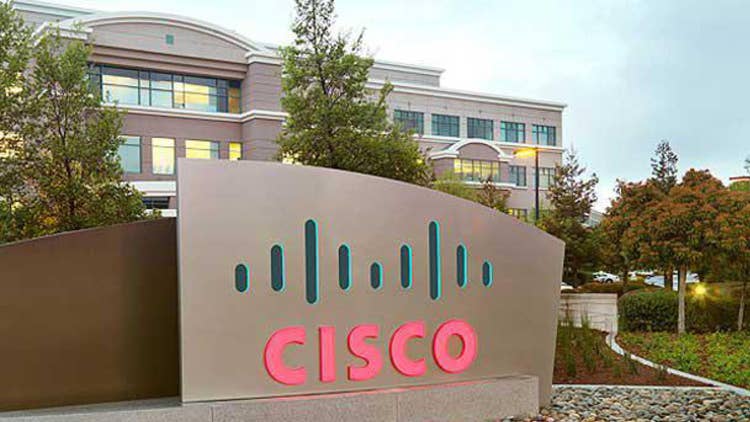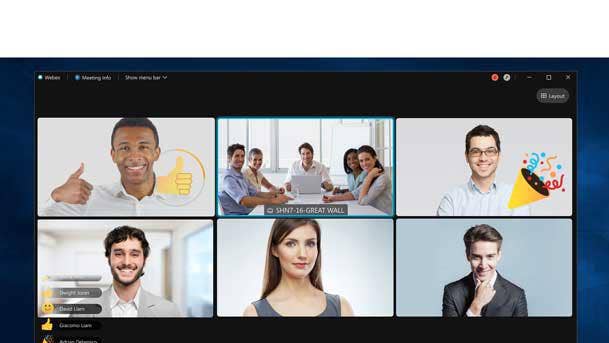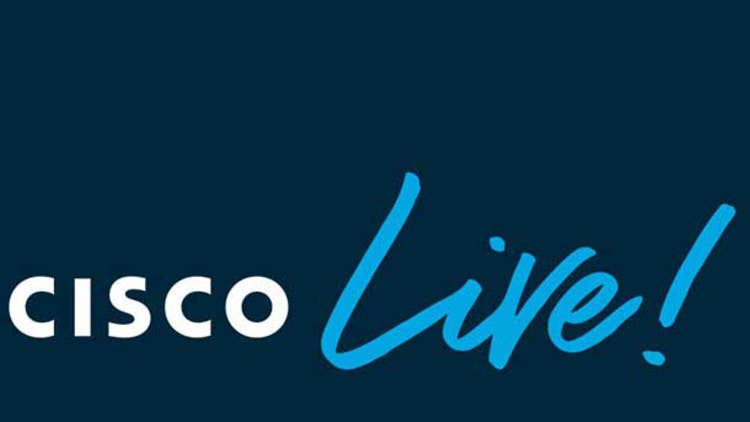Cisco’s Jeetu Patel On Hybrid Work And Creating Equal Opportunities For All Employees
‘We learned that it is unquestionable that people are able to work remotely and be extremely productive. It can’t be debated anymore because we’ve lived it. So, wouldn’t be unfortunate if, after what we’ve seen over the course of the past 15 months, we just went back to being the way that we were prior to COVID?’ Cisco executive vice president Jeetu Patel tells CRN regarding hybrid work.

The Future Is More Inclusive
The COVID-19 pandemic forced companies all over the globe to rethink their workforces and physical spaces. In fact, Cisco Systems at the end of July announced it will be officially transitioning to a hybrid work model for all its 75,000 global employees and the tech giant hopes that more businesses will follow suit.
That’s because if the last year and a half has taught the world anything, it’s that work isn’t about where you are located geographically, it’s about what you do, Jeetu Patel, Cisco’s senior vice president and general manager, security and applications group, told CRN. Secure networking and collaboration solutions have made it so that employees can work with their geographically-disperse teammates from the comfort of their home offices through private connections. A hybrid working model can also break down barriers to talent. Now, companies don’t have to be restricted by location, borders, or even stay at home mandates when it comes to finding the right person for the job.
But hybrid work won’t only involve the adoption of new technologies. It will also include a culture shift in making sure that all employees feel like part of the team. Vendors can be a part of that solutions, but partners will be critical in boosting inclusion, Patel said.
Patel sat down with CRN to talk about the company’s own hybrid work plans and future event strategies, as well as the kinds of innovations that can help power a more inclusive working world that will involve a mix of in-house and remote employees.
Here are excerpts from the conversation.

How will the hybrid work model help boost inclusion for all employees?
When you start thinking about what the past 15-16 months have taught us, there is an enormous opportunity to go out and level the playing field for the world. Imagine that anyone could participate in a global economy, from anywhere, irrespective of their geography, or language preference, or personality type — like being an introvert or an extrovert — or tech proficiency level. You just open up the aperture so much on the ability to create more opportunity for people throughout the world. But you also benefit as a business because you have access to talent. It’s just goodness all over. We wanted to make sure that we reflected on the past 15-16 months and said, “What did we learn?” We learned that it is unquestionable that people are able to work remotely and be extremely productive. It can’t be debated anymore because we’ve lived it. So, it wouldn’t be unfortunate if, after what we’ve seen over the course of the past 17 months, we just went back to being the way that we were prior to COVID because you wouldn’t really haven’t learned anything from it.
I personally immigrated to the U.S. in 1991 and I tell my friends, if I hadn’t ever been to the U.S., my life would have been very different. The U.S. afforded me so many opportunities and I wanted to come here, but there’s so many people who sometimes want access to opportunity, but because opportunity is not evenly distributed, they might not want to immigrate but are forced to. What we’d love to have happen is to create a world where immigration is not a necessary prerequisite for access to opportunity. So, that’s another area that’s super exciting. If you happen to be a person in a village in Bangladesh, or in a place in Africa, or happened to be in the heart of Silicon Valley, you should have equal opportunity available to you. Or you happen to be someone who is a single parent that wants to pick up your child from daycare in the afternoon, you shouldn’t feel guilty and feel like you cannot therefore have ambition to go out and do great things in your professional life. You should be able to do both, and we feel like these kinds of flexible choices afford people the opportunity to be able to do that.
Frankly, while we are among the first to think about this, we hope others join us in this journey. You will have better access to talent because that flexibility will allow people to think differently about the job and be able to get different kinds of people from all different walks of life to be able to contribute in ways that they couldn’t otherwise not because there were too many constraints. Work is not about where you are, it’s more about what you do.

How is Cisco addressing the inclusion issue with its technology to help all employees feel like equal meeting participants?
We’ve been thinking long and hard about that area because you want to make sure that no one feels like a second-class participant. Prior to COVID, a common scenario would be four people in the conference room and three people working not in the conference room, but someplace else. And how do you make sure that these people dialing in don’t feel left out? We’ve actually invested a lot in camera intelligence technology, for example – and this is just one example — where the view in the conference room typically leads to a lot to be desired. What ends up happening is it’s a zoomed-out view of a large conference room with a long table and people can’t see each other’s facial expressions remotely. So, we’ve said that the camera will be smart enough to know who’s in the conference room, zoom into them, and then each one of them becomes an individual box. So, everyone feels like they have a level playing field.
You also need many more huddle rooms and collaborative workspaces in offices compared to what you would have had in the past. One of the stats that was really interesting is prior to COVID, out of our workforce of 75,000 employees, 63 percent of them worked three to five days in the office. Post-COVID, 77 percent of [employees] will be working from outside the office. So, as you think about that, how you configure your real estate will change as well because you might not have as many desks that are dedicated for individuals. You might have hot desking and that might get to be a very prominent use case. And then you might have more huddle spaces and collaborative areas that people can actually go to for collaboration in the office. But if you wanted to work in a quiet zone, you work from home. Those are the kinds of things that people will want choices for. Not only will you have a fair amount of innovation in technology, but we also make sure that that innovation is supported with the way we can configure our spaces.

How is Cisco’s own real estate footprint changing with the newly announced hybrid work model?
We’ll still have offices, but we will rethink space utilization and rethink how we develop sustainable and regenerative products. We will be designing for more energy efficient buildings [and] our carbon footprint will be able to be lower than what was before. Those are the kinds of commitments we’ll make. Then, we’ll also make sure that how the office gets configured, that it’s actually going to have more spaces for collaboration. [That’s] something that we’ll really be thinking about.

How important is cloud when it comes to the security of the hybrid work environment?
[Moving to the cloud] is almost a prerequisite. There are only two types of companies, the way I see it. Those that have moved to the cloud, and the ones that are moving to the cloud. So, in that perspective, there’s a tremendous amount of innovation that could be added. For example, we added over 800 features [to Webex] since September — it’s probably gone up since then — and there’s no way you could have done that without a cloud stack. And the beauty about that was 650 million people that use your technology got access to [those new features] right away. You don’t have to go out and go through this very arduous cycle of upgrading.
Being in the cloud just provides you a level of agility that’s extremely important. But it also is one of those things that’s fundamentally changed in the standpoint that the security posture in the cloud used to be pretty weak when you looked at it 10-15 years ago. People were very concerned about moving to the cloud because of security. Now, if done right, your security posture can be stronger in the cloud than what it is on-prem. And there’s a lot that you can do with security, privacy, and compliance in the cloud because you have a lot of instrumentation, telemetry, and data. You can actually help keep people protected, safe and secure. We think it’s actually central to the architecture as we move into this hybrid work world. In fact, so much so that even our devices now are cloud connected, meaning they just get pushed an update just like Tesla pushes updates to cars. There is going to be this merging of hardware and software together which is very powerful as we move into this hybrid world.

Will Cisco’s events, like Cisco Live and Partner Summit, all have a virtual component moving forward?
So, there’s actually a company called Socio Labs we just recently bought [for Webex Events]; we think events are going to be hybrid as we move forward. There will be times that you will actually want to be in a conference center and do an event in-person, and then that event might actually get carried forward with a virtual component. You’ll see these events be a very, very common thing, and frankly, what we wanted to do was make sure that that was available as part of our offering, without companies [having to] think about that as a separate thing that they had to buy. What we’re doing right now with the Webex suite [is offer] the ability to go out and host hybrid events, whether they be internal events, or external events, and not just things like video streaming, but also things like registration, ticketing, sponsorship, and promotions, all of those pieces will be capabilities that we now have that will be made available. You don’t have to worry about that being something that’s separate.
We’re fundamentally reimagining how events work because they won’t just be physical or virtual, there’ll be a combination of physical and virtual together. And they might not just be a one-time event — they might also be something that continues over time. You meet a lot of interesting people at an event or a conference. Wouldn’t it be nice if you actually had more interaction with them during the course of the following year before you see them again next year? There’s probably opportunity for us to go out and make some of those connections more frequently.

What kinds of opportunities will hybrid work open up for channel partners?
First, Cisco is a partner-first organization. We love our partners, and we value them so much — we wouldn’t be the company we are if it weren’t for them and we want to continue that partnership as we move forward. Hybrid work will actually open up a whole new set of opportunities for partners that they have not even seen in the past, because there’s so many different things from a change management perspective, from a real estate configuration perspective, from a technology perspective, and from a cultural perspective [and] partners will have an opportunity to augment our solutions to take to the market. And we’re actually not only hoping that they join us for the journey, we’re depending on them to join us for the journey so we can do it together.
Everything that we do from a product standpoint, we think about how it accommodates partners. We’ve actually seen a tremendous amount of encouraging signals from partners who are also thinking of very innovative ways to add value to what we’re doing. Expect us to have great stories to tell from our partners over time.